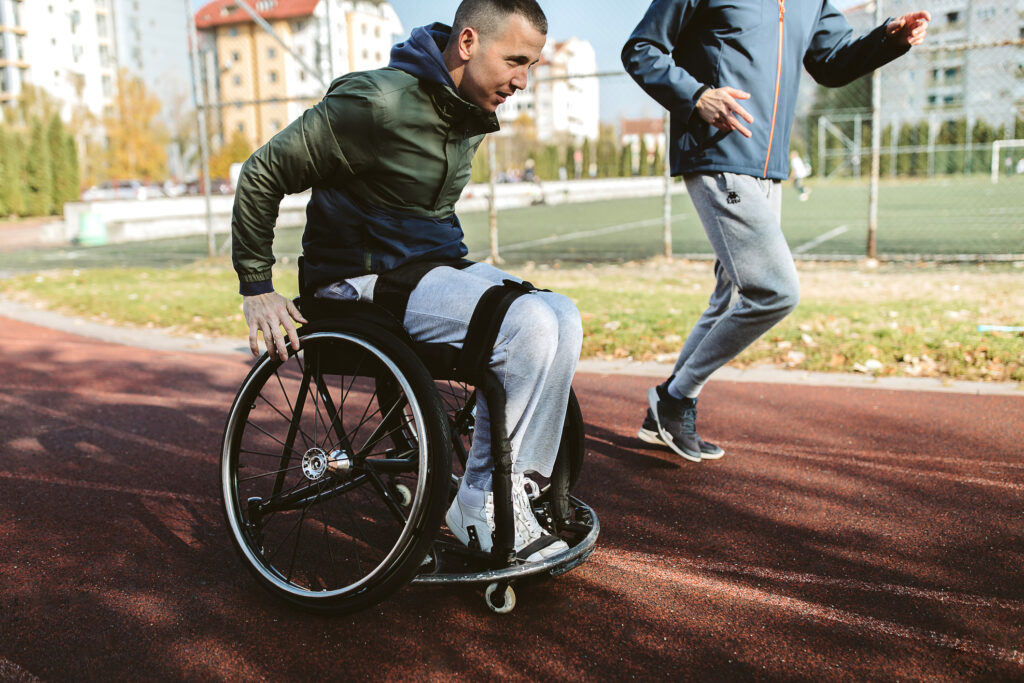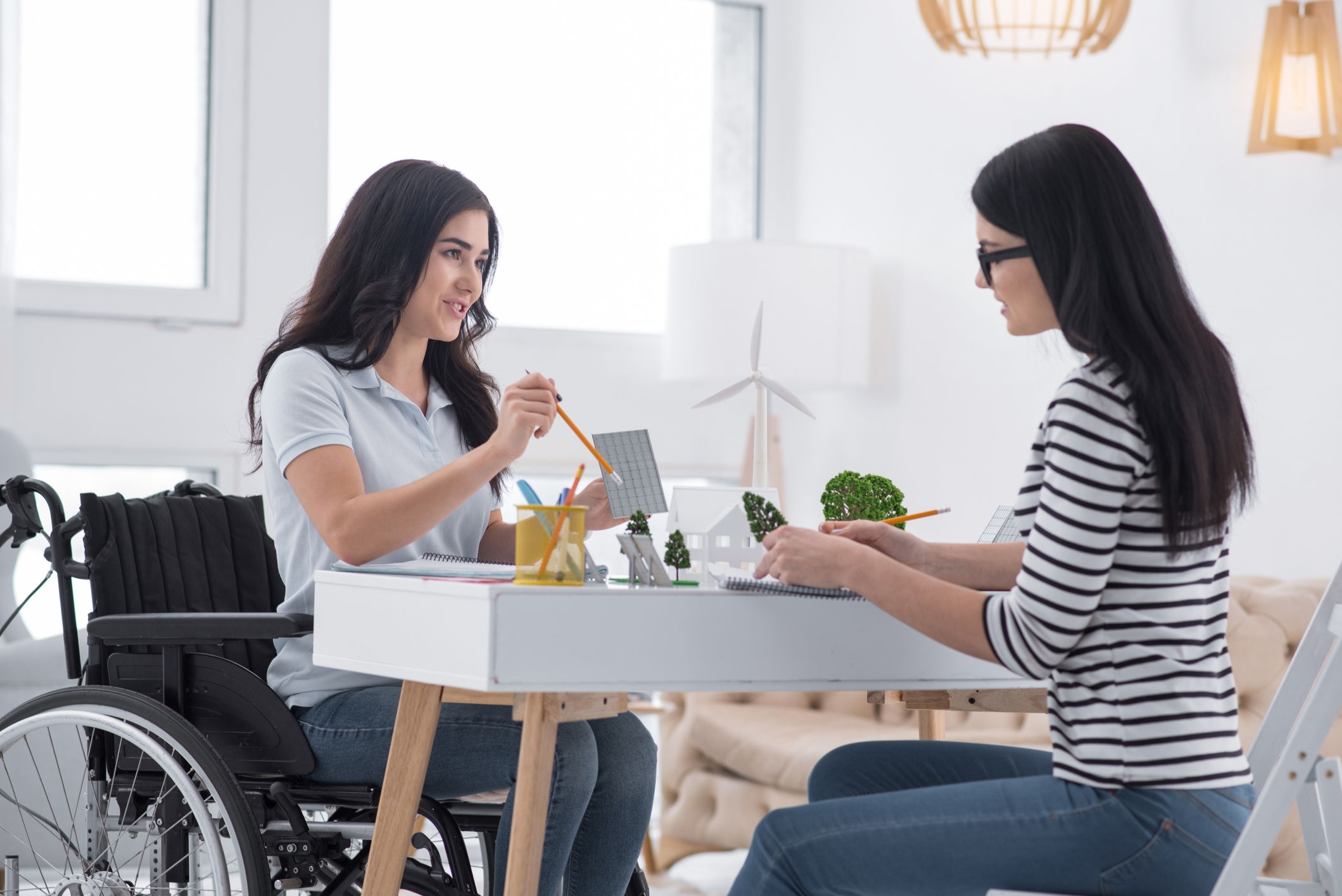Amy de Paula, Occupational Therapist
With acknowledgements to Wendy Harris, Robyn Ryan, Jason Lowe, Blair McFarlane, Kirsty Kinch, Bronwyn Chandler and Liz Dallaway
Co-design is a social process, a creative mix of viewpoints to achieve a design greater than anyone could come up with on their own1. Co-design offers a way to navigate the complexity of choosing the right wheelchair for your needs. Nobody knows their life like the person who is living it. They bring that to the co-design table. When choosing who to co-design your next wheelchair with, you may like to consider who else to invite.
Occupational Therapists (OTs) study how people function and find factors that facilitate this to work well. They are trained in areas like ergonomics, pressure care, posture, muscle spasm, reach and fine motor tasks. They are a great asset in seeing how the parts of a wheelchair make up the whole, and its fit with the person. Some OTs have done additional study and practice to support seating and wheeled mobility, which provides them with additional knowledge and skills to offer to the co-design process. The success and fit of a new chair often come down to the small adjustments that are part of the extended fitting process, and a skilled OT can assist with things that can make or break a chair, like the right seat angles or just enough lumbar support in a backrest.

Physiotherapists study how people move and are highly skilled in understanding mobility, movement, strength and rehabilitation where there is injury. When required, they add helpful insight, such as when self-transferring becomes more difficult or when a shoulder or other joint is injured. Some physiotherapists have also done additional studies in seating and wheeled mobility.
Rehabilitation Engineers are a rare inclusion, but specialist services such as the Assistive Technology and Seating clinics in North Ryde and at Prince of Wales Hospital offer the opportunity to include their input. They have another different view on the chair: its structure and ability. They also have the capacity to design custom items or offer advice on complex adjustments to features such as suspension. They can also add value when trying to make choices on wheelchairs that are going to travel in vehicles (although your OT can help with this too).

Clinical Nurse Consultants can also have valuable information about pressure injury management and your skincare history. How you manage your continence while out and about may interact with your chair. Sometimes they can add value to the process, and if you have been working with a clinician or a clinic on managing your health needs, it can be a good time to connect with them and discuss any concerns with them.
Family and significant others can have some valued insights. Some people like to make these choices on their own; others like to include a trusted person to help them get the decision right or take into account features that interact with family life or valued community participation. Co-design means choosing whose advice gets added into the creative collaboration.
Suppliers, manufacturers, and reps are part of your team. They hold the knowledge that your team can use to interpret your options. They can arrange extended trials when you are unsure and see what repairs and maintenance are common on different mobility options.
Peer Support or chatting with others with a disability is also a great way to get insight into what features you might want to consider in your next chair.
Tips for finding the right people for the process:
When choosing who you want to co-design with, it is perfectly reasonable to discuss how much experience the professional you are considering adding to your team has in wheelchair and seating prescription and your disability-specific needs. Do you need a team of thousands? Absolutely not, but finding the right people is important. Co-design offers you the option to add to your team who you need.
1. Steen, M. (2013). Co-design as a process of joint inquiry and imagination. Design Issues, 29(2), 16-28..
